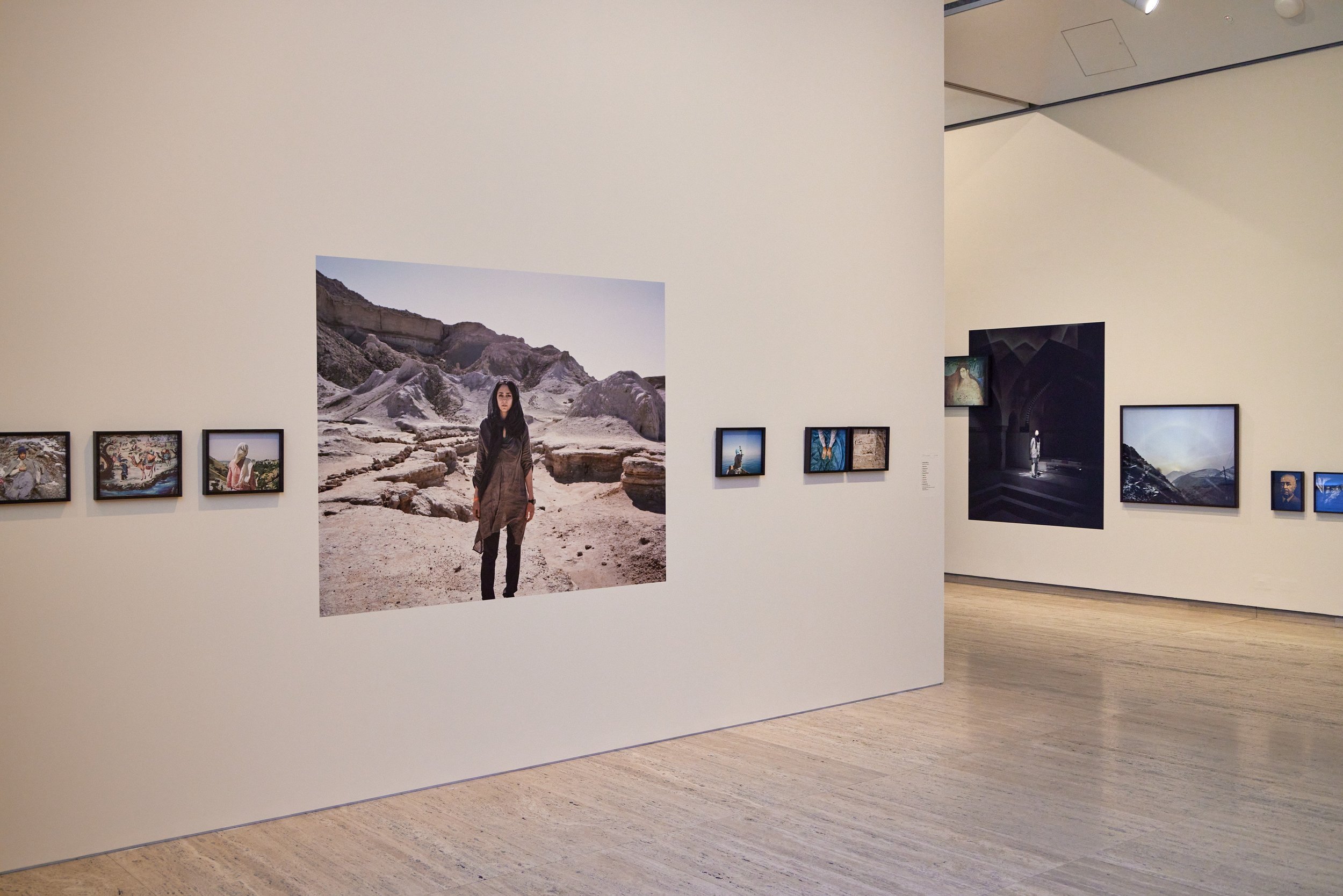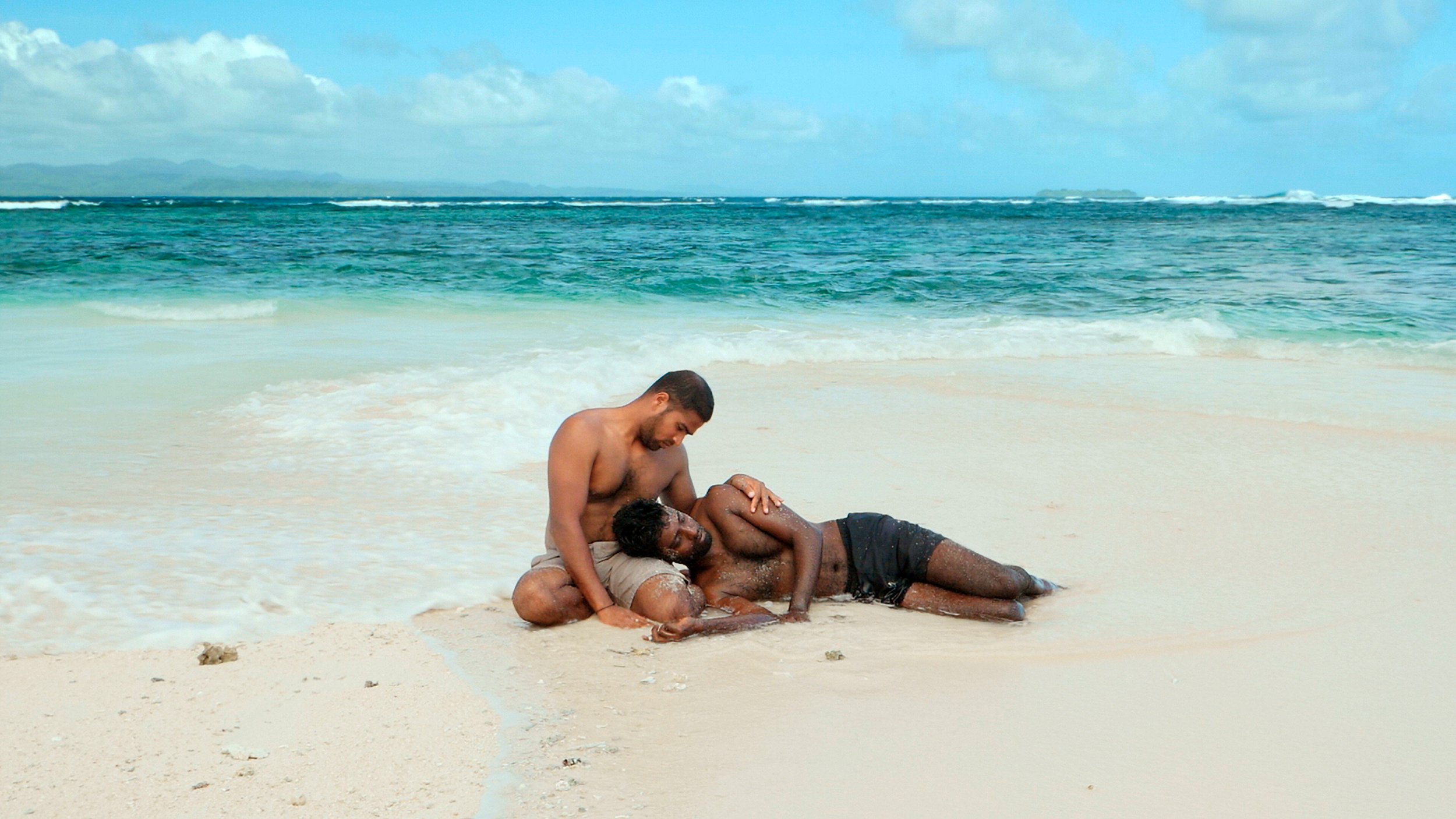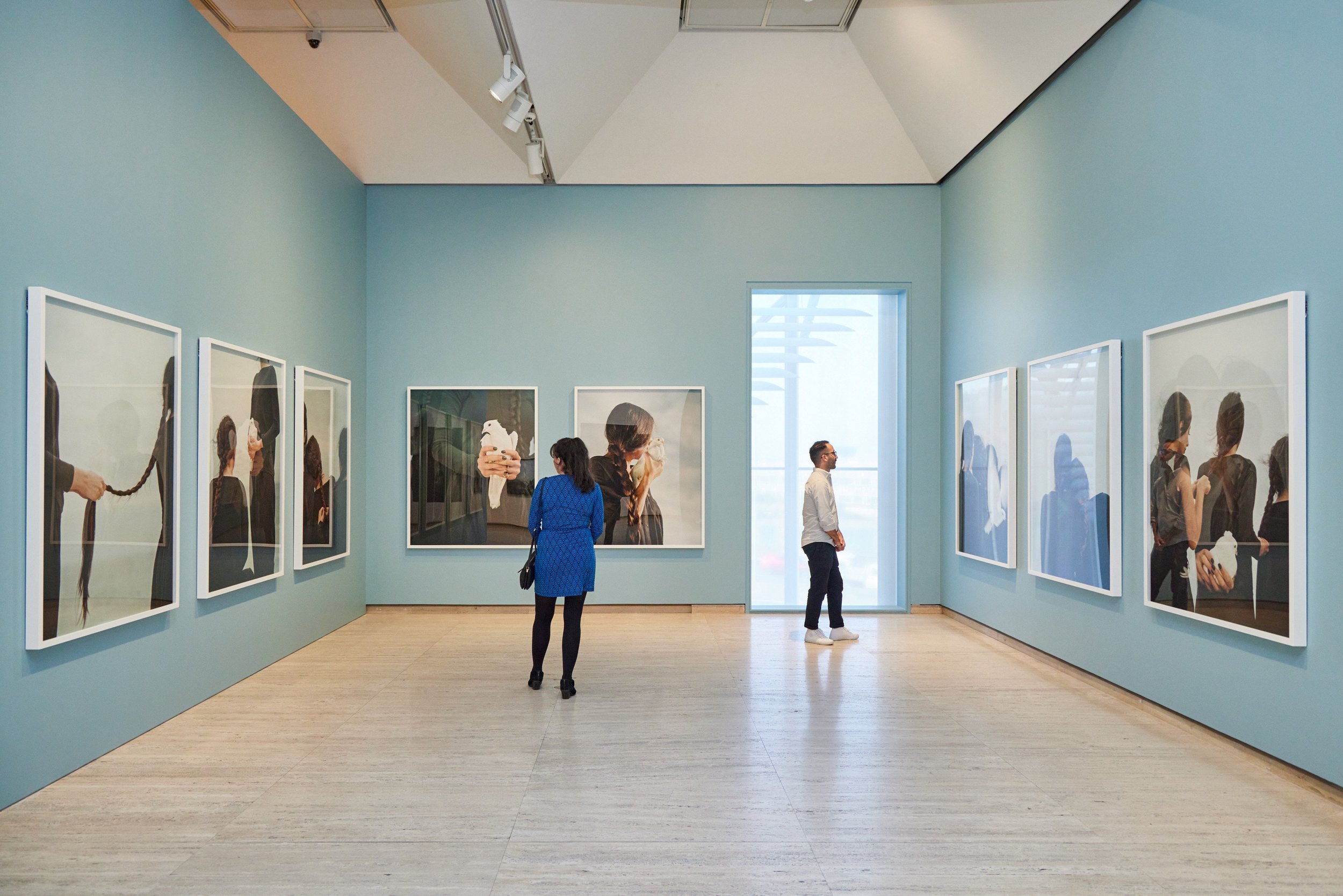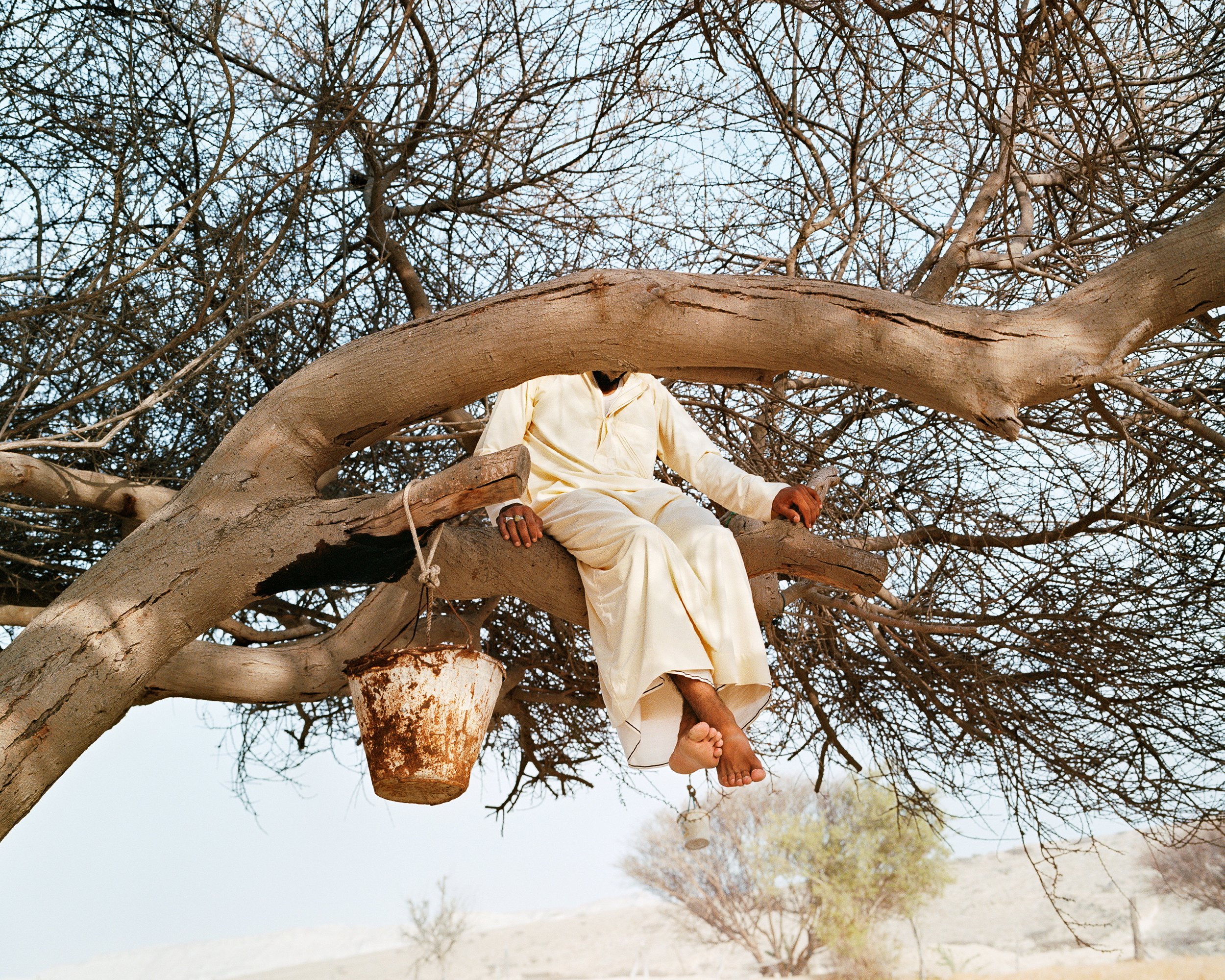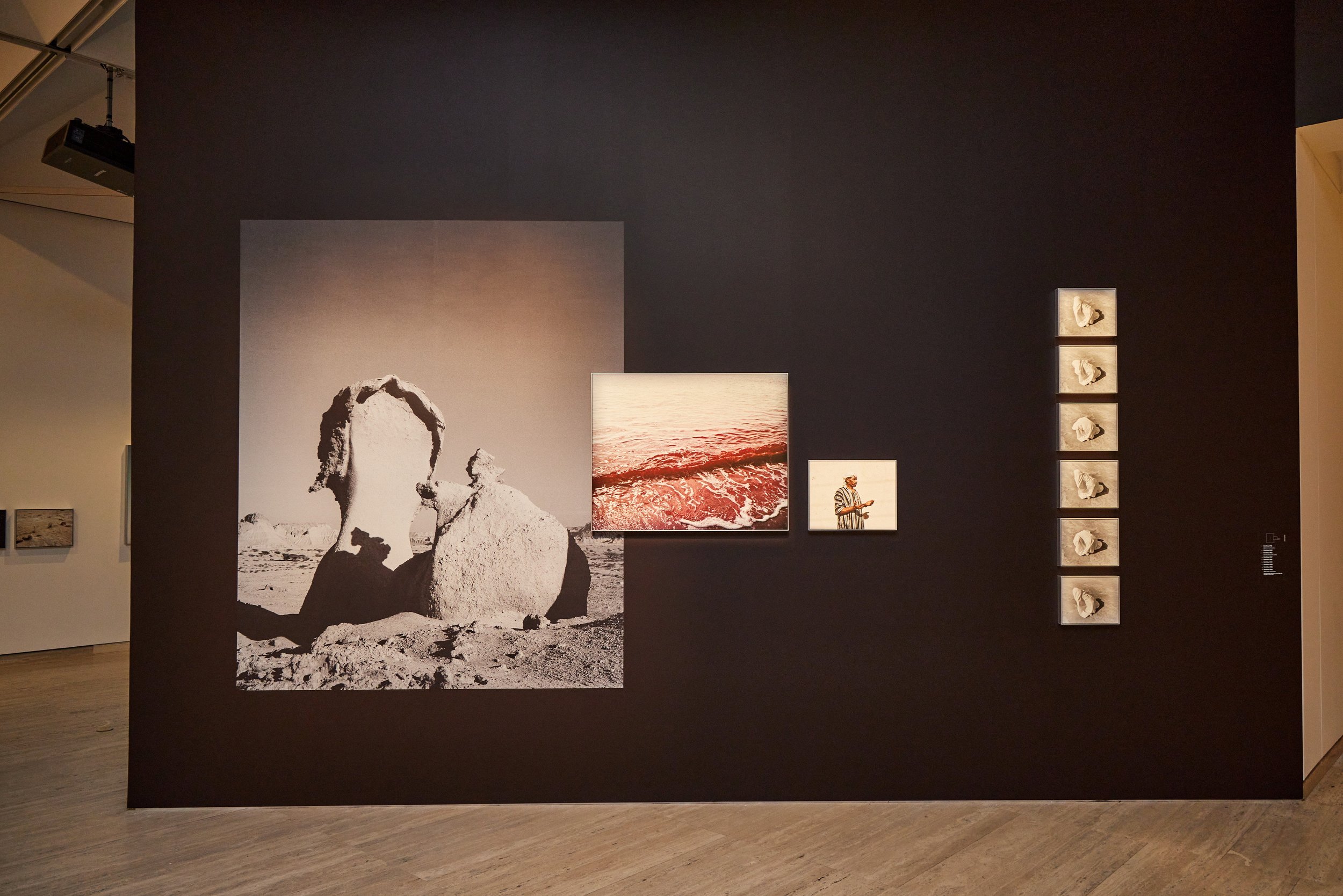If the heart has an eye: Hoda Afshar at the Art Gallery of New South Wales
/It’s 1824 and we’re in the Caribbean, on the island of Trinidad to be precise. Marie-Ursule, queen of a secret society of slaves, is plotting a mass murder-suicide in an act of strategic revolt. Her plan unfolds but with one small hitch. Marie-Ursule can’t kill her daughter Bola; Bola refuses to die. And it so happens that when Bola escapes her mother’s murderous clutches, a new world opens. Bola’s descendants spill out across the Caribbean, North America, and out into the world. They wander inside a lyrical exile as their compasses point towards displacement.
Their journey is full of twists, turns and chance encounters. It’s a journey Dionne Brand renders in her novel At the Full and Change of the Moon (1999) with all the skills at her disposal. Brand’s novel is a cacophony of shifting moods, rhythms, and formal structures. Likewise, Hoda Afshar uses all the skills at her artistic disposal to cover similar terrain. Yearning, exile, estrangement, fleeting acts of freedom – this is the wellspring from which Afshar assembles her aesthetic sensibility. And if you didn’t know any better, you could easily mistake her for one of Bola’s wandering descendants.
In some respects, Afshar fits the bill. Born in Iran, she migrated to Australia in 2007. Like Bola’s descendants, the slings and arrows of outrageous fortune have delivered her to a place of liminality. An outsider of sorts in her native Iran, she occupies a similar status in Australia. Afshar’s work leans into this displacement. The results of such a disposition, palpably evident in ‘A Curve is a Broken Line’ at the Art Gallery of New South Wales, allows for a glimpse inside a body of work saddled with noble ambition. As viewers, we’re invited to lurk inside a compelling displacement.
Art is at its most stimulating when unhinged. When it communicates wildly, in directions that institutions, despite concerted efforts, can never fully control. ‘A Curve is a Broken Line’ is testament to this truth. Here, the work does the talking. It’s lucid, possessed with compositional discipline. It’s at times opaque, oddly askew. It’s also a pleasure to visually behold.
I came to the exhibition with curiosity piqued. I had encountered Afshar’s work from afar, but never in person. From behind a computer screen, she appeared to be tapping into something I had long suspected – that reality is too surreal to comprehend without the aid of a poetic touch.
Walking into In the Exodus, I Love You More (2014–) my suspicions were reconfirmed. As portraits of Iran, this series can best be described as detours, digressions, open-ended gestures. They are the result of a trip Afshar made to her homeland after seven years abroad. There’s no allowance for restoration, for closure. In Shadow (2018), an impenetrable figure, clad in black, sits turned away from your gaze, centred in a naturally lit, tiled setting. Their only company is their shadow. You don’t know who they are, where they are coming from, or where they are going. Likewise in Surface (2014), another impenetrable figure stands facing a brick wall. You struggle to place them within a context. The landscape, both built and natural, is similarly imponderable. In Vault (2018), an octagon of blue-sky cuts into an obscure backdrop. Save for a pocket of light that reveals a stony surface, you don’t know what sits inside the capacious blackness. Under Afshar’s guidance there’s much you don’t see, and likely never will, when it comes to Iran. You can only see the fragments of a homeland, not the whole, variations of theme and form that spark connection and disconnection.
Variations of theme and form continued as I progressed inside the exhibition. In Turn (2023) presents a series of meticulous works of stately simplicity. Taken together, they evoke a delicate pas de deux between the seen and unseen, the revealed and concealed. Obfuscation emerges as a clear pictorial motif. Iranian women, dressed in black and, like Afshar, based in Melbourne, console, touch, and support one another. Through judicious cropping, their individual identities are concealed. Their faces, for the most part, exist out of frame, as if rejecting any effort to engage, to possess, to be seen. In a way, this makes perfect sense. The women are united in a collective grief, mourning, from afar, the death of Masha Amini at the hands of the Guidance Patrol. You can forgive them for not wanting prying eyes to pierce their sacred bubble.
In Remain (2019), a motley crew of displaced men languishing on Manus Island take centre stage. The previously stressed obfuscation is eased up a little. There are certain things you need to see in life. Afshar grants her subjects agency, inviting them to become collaborators. The resulting portraits, positioned across a towering wall, invite a studied viewing. You want to lean into them but can’t. The looking here must be accompanied by listening – stirring falsettos, desperate testimonies, and existential cries spill from videos of some of the same men projected onto two enlarged, slanted walls behind you. It was almost unbearable, their wounded kinship that carried the memory, at least within me, of an ineradicable and collective pain, a stark sense of something profoundly out of joint.
The rest of the exhibition sees Afshar wandering with characteristic discipline across a disparate field, touching on the secretive desires of gay men in Iran, the dolorous agony of Australian whistle-blowers, and the otherworldly lives of Afro-Iranians in the Strait of Hormuz. The themes are not identical but linked by visual parallels, striking symmetries, and rhyming forms. A seeing guided by an inner attitude is encouraged. Afshar demands, in a most gentle way, audiences to meet and challenge her work on its own terms. It’s a welcome pleasure to be burdened so.
Brian Obiri-Asare, Warrang/Sydney
Curated by Isobel Parker-Philip, ‘A Curve is a Broken Line’ continues at the Art Gallery of New South Wales until 21 January 2024.

